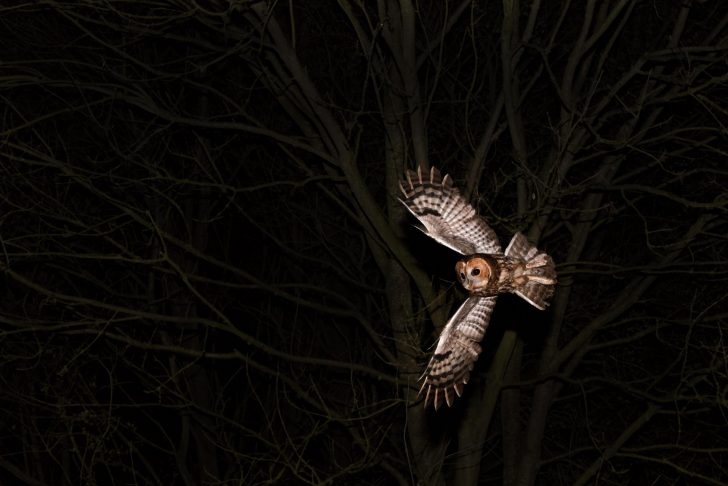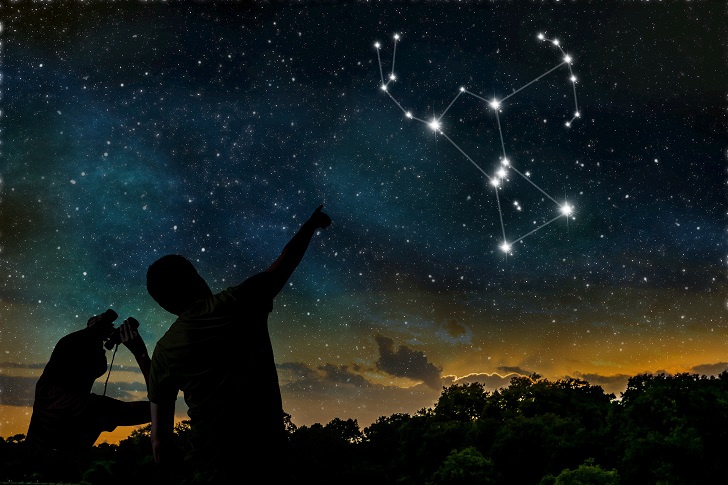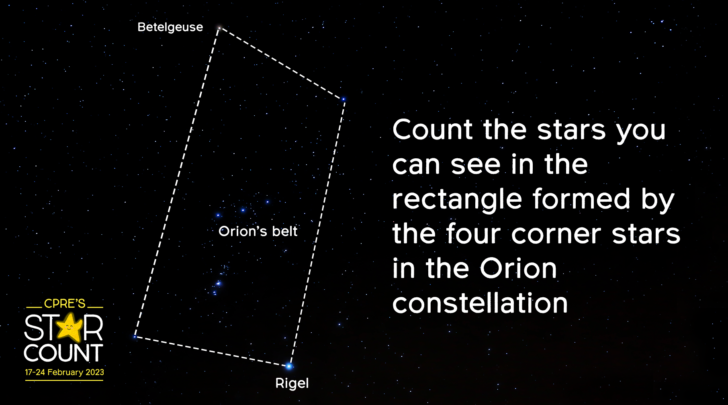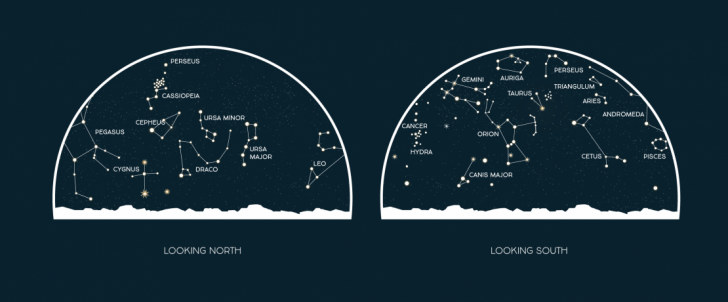Five ways to make your Star Count sparkle
Our annual citizen science activity Star Count takes place every year around February. Before you turn your eyes to the sky, check out our tips for making the most of your stargazing session.
Each year, we run a free, fun stargazing activity. It’s simple, easy to do from home, perfect for families and adults, helps us to measure light pollution – and thousands of people across the country join us.
You won’t need a telescope – just your eyes, a sense of curiosity, and somewhere where you can see the sky to the south. Remember, if you don’t have a garden or easy access to outside space, that’s no problem! You can do your Star Count from home, including a balcony, doorstep or even bedroom window.
1. Keep warm
Wrap up before you head outside. You want to be able to comfortably stay still as you look up at the night sky and it can get chilly at this time of year. Take a thermos of something warm if you’re planning to make a night of it.

2. Turn off all your lights
Light from your home can affect the number of stars you may be able to see. Turn off all the lights around you and let your eyes adjust to the darkness. You could even get your neighbours to join in and do a count at the same time!
Tip: you’ll need to make sure you’re looking south to spot Orion, so if you need to use your phone to work out which way is south, do that first of all and then pop your phone away. The glare from our phone screens makes star-spotting extra hard!
3. Let your eyes adjust to the darkness
The longer you wait, the better you’ll be able to see the stars – we recommend at least 20 minutes. While you’re waiting, why not listen out to see if you can hear any nighttime wildlife?

4. Count the stars in Orion
Once your eyes have adjusted to the dark, look up to find Orion the hunter. Look south (the way satellite dishes point!) and find the three bright stars in a row that form his belt.

Find the bright orange star on the top left of Orion, then the blue-white one on the bottom right. Then look for the other two that form a rectangle around the constellation.

Now all you have to do is count all the stars you can see within the rectangle. Include Orion’s belt, but not the four corner stars. You don’t need a telescope or binoculars, remember; we want to hear what you can spot with the naked eye.
5. Explore the universe
If you’re treated to a good view of the night sky, make the most of it. There are some great star charts online, like this on Astronomy Now – and plenty of stargazing phone apps that will help you see what other constellations can you spot in the cosmos.
Or, for a quick and easy guide, try CPRE Avon and Bristol’s handy star maps for February.









